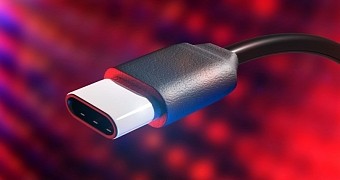With device manufacturers across the world still slow when it comes to embracing USB Type-C, there’s now another reason to switch to this specification.
The USB 3.0 Promoter Group announced USB 3.2, an incremental update that brings a major series of advantages, including double data transfer speed without a cable upgrade.
In other words, devices will benefit from double data rates using the existing cables, all thanks to an implementation that was available since the original USB Type-C standard was rolled out.
Specifically, USB Type-C cables were designed from the very beginning to support multi-lane operation, but USB 3.2 is the first to take full advantage of this implementation. USB 3.2 hosts and devices will thus be designed as multi-lane solutions, offering two different approaches: either two lanes of 5 Gbps or two lanes of 10 Gbps.
Microsoft, a member of the group
Between the two, it’s not hard to figure out which one top device manufacturers are going to choose, especially because a USB 3.2 storage device will offer data transfer performance that exceeds 2 GB per second when a USB Type-C cable certified for SuperSpeed USB 10 Gbps is being used.
“When we introduced USB Type-C to the market, we intended to assure that USB Type-C cables and connectors certified for SuperSpeed USB or SuperSpeed USB 10 Gbps would, as produced, support higher performance USB as newer generations of USB 3.0 were developed,” said Brad Saunders, USB 3.0 Promoter Group Chairman. “The USB 3.2 update delivers the next level of performance.”
The USB 3.0 Promoter Group includes top-rated members like Microsoft, Apple, Intel, HP, and others. But surprisingly, Microsoft doesn’t yet see USB 3.0 a mature standard, with the company refusing to implement it on its latest Surface models on claims that it would cause more confusion among customers.
Microsoft said that unless the correct cable is being used, customers could experience slower performance, which would in the end lead to more criticism and affect the image of both the device itself and the company as a whole.

 14 DAY TRIAL //
14 DAY TRIAL //